Real, Synthetic & Virtual AIS AtoNs, can you see them?
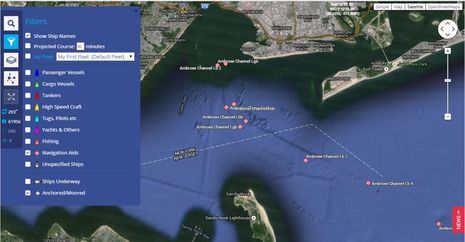 One way to spend a frigid night in Maine is learning about AIS AtoNs, an electronic augmentation to the aids to navigation we commonly think of as nav buoys, lighthouses, beacons, etc. The US Coast Guard recently began a year-long experiment with AIS AtoNs in New York Harbor, and sure enough, there they are on Marine Traffic. MT is an imperfect tool for understanding what AIS AtoNs look like on our boat displays, but if you set up the Filter as I have above -- Show Ship Names on, all vessel types but Navigation Aids off -- you can see that they are now set up around many major U.S. ports and that we're behind much of the world. There are three major types of AIS AtoN, along with many nuances, and their capabilities seem impressive, though perhaps a little confusing or even scary for some mariners...
One way to spend a frigid night in Maine is learning about AIS AtoNs, an electronic augmentation to the aids to navigation we commonly think of as nav buoys, lighthouses, beacons, etc. The US Coast Guard recently began a year-long experiment with AIS AtoNs in New York Harbor, and sure enough, there they are on Marine Traffic. MT is an imperfect tool for understanding what AIS AtoNs look like on our boat displays, but if you set up the Filter as I have above -- Show Ship Names on, all vessel types but Navigation Aids off -- you can see that they are now set up around many major U.S. ports and that we're behind much of the world. There are three major types of AIS AtoN, along with many nuances, and their capabilities seem impressive, though perhaps a little confusing or even scary for some mariners...
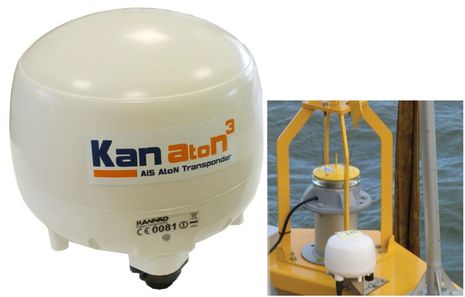 The most obvious variety is what's called a "Real" AIS AtoN, like the McMurdo Kanaton above. What's real is that the transceiver (or transmitter) is installed on a physical aid to navigation. The hardware is vaguely similar to an AIS transponder on a boat, though you'll learn that there's a lot more to it if you dig into this IALA Guideline PDF (credit to Jim Hebert's good AIS AtoN research at Continuous Wave). For instance, there are three (sub) types of Real AIS AtoNs. And even the basic transmit-only type 1 can accept sensor input, and thus, report on the status of the nav aid's light or RACON as well as weather information. The type 3 Kanaton above also has a receiver and can relay messages transmitted by a nearby AIS SART/MoB device or safety messages set up by an AIS base station ashore.
The most obvious variety is what's called a "Real" AIS AtoN, like the McMurdo Kanaton above. What's real is that the transceiver (or transmitter) is installed on a physical aid to navigation. The hardware is vaguely similar to an AIS transponder on a boat, though you'll learn that there's a lot more to it if you dig into this IALA Guideline PDF (credit to Jim Hebert's good AIS AtoN research at Continuous Wave). For instance, there are three (sub) types of Real AIS AtoNs. And even the basic transmit-only type 1 can accept sensor input, and thus, report on the status of the nav aid's light or RACON as well as weather information. The type 3 Kanaton above also has a receiver and can relay messages transmitted by a nearby AIS SART/MoB device or safety messages set up by an AIS base station ashore.
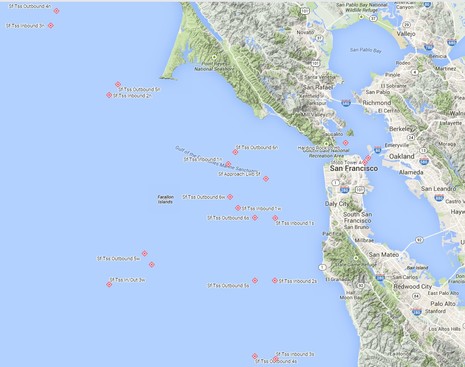 To my knowledge, though, the USCG is not experimenting with Real AIS AtoNs, and here's where the confusion may begin. A transponder that is where it tells you it is makes more sense than the fact that all those AIS AtoNs seen on Marine Traffic around San Francisco are being broadcast from one or more shore towers. That's possible because an AIS receiver cannot determine where transmissions come from; it only knows what it's told (and hence there is an issue with AIS spoofing, though it's largely overblown). To add to the confusion, there are two distinct types of non-Real eATONs, to use an acronym the USCG likes. A Synthetic AIS AtoN is electronically "located" at the same spot as a physical AtoN while a Virtual AIS AtoN only exists on AIS displays.
To my knowledge, though, the USCG is not experimenting with Real AIS AtoNs, and here's where the confusion may begin. A transponder that is where it tells you it is makes more sense than the fact that all those AIS AtoNs seen on Marine Traffic around San Francisco are being broadcast from one or more shore towers. That's possible because an AIS receiver cannot determine where transmissions come from; it only knows what it's told (and hence there is an issue with AIS spoofing, though it's largely overblown). To add to the confusion, there are two distinct types of non-Real eATONs, to use an acronym the USCG likes. A Synthetic AIS AtoN is electronically "located" at the same spot as a physical AtoN while a Virtual AIS AtoN only exists on AIS displays.
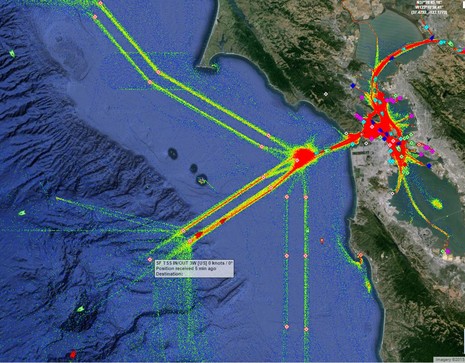 The general idea is that Synthetic AIS AtoNs can augment existing aids -- like Real AIS AtoNs, but without the hardware hassle and expense -- while Virtual AtoNs can go where physical ones don't make sense or where one is needed quickly. So many of the Synthetics around San Francisco correspond to the actual buoys marking the Traffic Separation Scheme, as suggested above using Marine Traffic's vessel "density" overlay (now available with the free subscription). {Correction 1/10: Actually many are Virtual AtoNs set right in the traffic lanes; see OpenCPN screen at end.} Recreational boaters with AIS displays might use the new aids to help them stay the heck out of the way.
The general idea is that Synthetic AIS AtoNs can augment existing aids -- like Real AIS AtoNs, but without the hardware hassle and expense -- while Virtual AtoNs can go where physical ones don't make sense or where one is needed quickly. So many of the Synthetics around San Francisco correspond to the actual buoys marking the Traffic Separation Scheme, as suggested above using Marine Traffic's vessel "density" overlay (now available with the free subscription). {Correction 1/10: Actually many are Virtual AtoNs set right in the traffic lanes; see OpenCPN screen at end.} Recreational boaters with AIS displays might use the new aids to help them stay the heck out of the way.
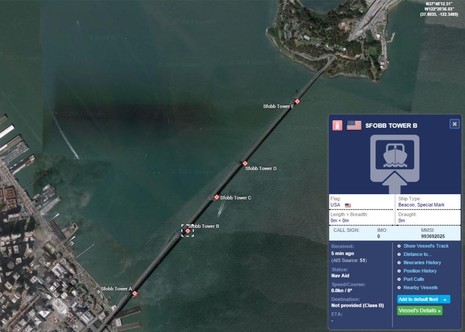 Meanwhile, Virtual AIS AtoNs are being used to mark the towers under the Bay Bridge, like the one that got in the way of the 900-foot M/V Cosco Busan one foggy morning in 2007. Virtual AtoNs can also be used to quickly mark, say, a vessel that sinks just below the surface in a channel or to permanently guard a dangerous ledge in a remote area (like this Vesper Marine install)...the uses seems almost infinite. And I think that both Synthetic and Virtual AIS AtoNs can be deployed almost anywhere along our coast, because they can be broadcast not just from the AIS base stations typically found near major ports, but also from the NAIS towers that are trying to monitor all AIS traffic off our coasts. (And, yes, it is valid to ask, "Why isn't the public AIS portion of NAIS data available to the public?" in my opinion at least.)
Meanwhile, Virtual AIS AtoNs are being used to mark the towers under the Bay Bridge, like the one that got in the way of the 900-foot M/V Cosco Busan one foggy morning in 2007. Virtual AtoNs can also be used to quickly mark, say, a vessel that sinks just below the surface in a channel or to permanently guard a dangerous ledge in a remote area (like this Vesper Marine install)...the uses seems almost infinite. And I think that both Synthetic and Virtual AIS AtoNs can be deployed almost anywhere along our coast, because they can be broadcast not just from the AIS base stations typically found near major ports, but also from the NAIS towers that are trying to monitor all AIS traffic off our coasts. (And, yes, it is valid to ask, "Why isn't the public AIS portion of NAIS data available to the public?" in my opinion at least.)
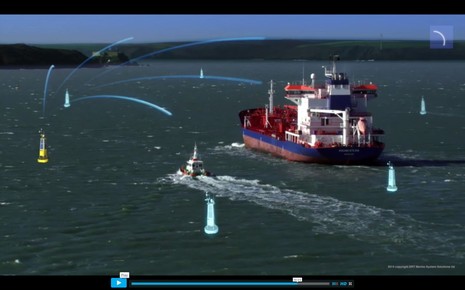 Incidentally, Real AIS AtoNs can create Virtual and Synthetic AtoNs, as explained in a neat YouTube video that goes with the Carbon model SRT builds for OEM distribution.
Incidentally, Real AIS AtoNs can create Virtual and Synthetic AtoNs, as explained in a neat YouTube video that goes with the Carbon model SRT builds for OEM distribution.
So how do AIS AtoNs display on a multifunction nav display or charting program? I really don't know! I saw some on the SeaPilot app while visiting True Heading in Sweden but have not yet spotted one on any of Gizmo's many AIS displays, probably -- but not necessarily -- because I haven't been within range of one yet. The screenshot above was taken of Marine Traffic before I lost my Pro subscription with its choice of Navionics chart underlay (remember that you, too, can earn a Pro or Premium sub by maintaining a volunteer listening station, and there can't be enough.) And while it's nice that MT shows AIS AtoNs at all -- some other Web AIS viewers don't -- the site does not display them correctly. While it is translating AIS Message 21 for AtoNs, some of the info is squeezed into a data box meant for vessels, and I think that some isn't displayed at all. That's why "RANCE LWB A" is not the Destination of "BOSTON N CHANNEL ENT" but rather the rest of its name!
Marine Traffic is also using the same icon for AIS AtoNs as it uses for moored vessels, and that's not right, either. I found the graphic above in a USCG AIS ATON Special Notice PDF and you can see that while Real and Synthetic AIS AtoNs intend to look the same, Virtual AtoNs get different treatment. By the way, there's a "CAPE CAN DGR A" AIS AtoN operating just north of Cape Canaveral, Florida, right now and wouldn't it be great if an enterprising Panbo reader got screenshots of how it looks on their boat displays?
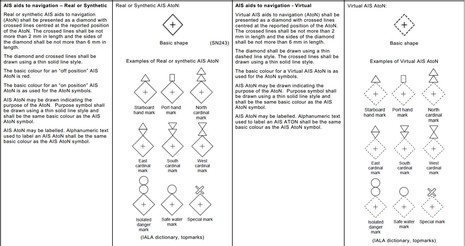 But note how the USCG graphic shows how an "Isolated Danger" AIS AtoN will potentially be portrayed. By the same token, the graphics above showing more types of AIS AtoN icons come from a draft of IEC 6288 Ed. 2. I also read somewhere that even ECDIS displays are not yet required to show standard AIS AtoN icons. All this makes me nervous about what the state of affairs is on recreational displays, but of course many of you out there can help.
But note how the USCG graphic shows how an "Isolated Danger" AIS AtoN will potentially be portrayed. By the same token, the graphics above showing more types of AIS AtoN icons come from a draft of IEC 6288 Ed. 2. I also read somewhere that even ECDIS displays are not yet required to show standard AIS AtoN icons. All this makes me nervous about what the state of affairs is on recreational displays, but of course many of you out there can help.
As noted at the beginning, Marine Traffic shows AIS AtoNs in many places along the U.S. coast and many, many more around Europe and Asia (though the ones I saw properly displayed on SeaPilot are oddly missing). Are they showing up on your displays? Do the icons look right? Are long nav aid names shown correctly? Are there data fields to indicate if an aids light or RACON is working correctly, or if it's off station? Please tell us in the comments and if possible, please send screenshots (ben at panbo.com) for a followup entry. Bonus points for a screen showing AIS AtoN weather info, because that's a subject of much more complexity that may also merit an eventual entry. Myself, I hope to "see" the AIS range marks and entrance bouy in Miami during the February show, but won't really get going in Gizmo until April or May.
PS 1/10/15: This screenshot indicates that at least the charting program OpenCPN can display AIS AtoN message 21 pretty well, and also that I was confused in the text above. Most of the AIS AtoNs marking the San Francisco traffic lanes are Virtual, not Synthetic. More in comments below.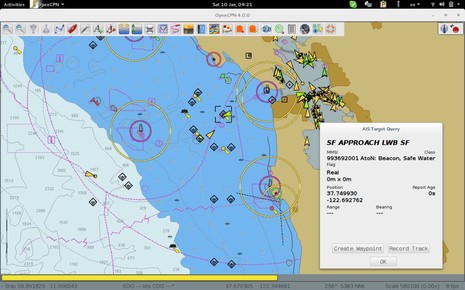

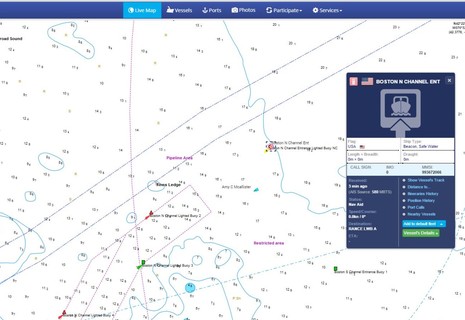
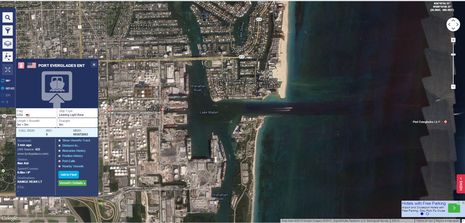
 Share
Share
We just transited through Key West, fl. There are virtual beacons for the harbor approach that show up on the marine traffic site but I didn't see them at all on my Garmin suite (6212 and 8212) as well as on Coastal Explorer.